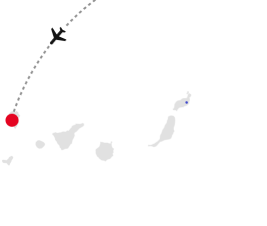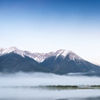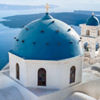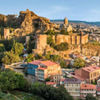
Tradition, luxury, and pleasure: La Palma’s best museums



Cleverly staged: the life of the indigenous people
La Palma likes to present its ancient cultural treasures within modern architecture. A fine example of this is the circular Museo Arqueológico Benahoarita in Los Llanos de Aridane, that has been imparting knowledge about the island’s indigenous people and their history since 2007. The multimedia exhibition with many animated scenes, replicas, and original finds, gives a detailed picture of the life of the Benahoaritas. The more than 1,000-year-old cave dwelling in the Parque Arqueológico El Tendal in San Juan, that was home to roughly 20 indigenous people over many generations, is also framed by a modern exhibition facility that was only built in 2019.


An island of silk weavers
Europe’s last silk weaving workshop can be found in El Paso: the Taller de Las Hilanderas. Here, silk weavers give live demonstrations to show how their ancestors produced the precious fabric over 250 years ago. Back then, La Palma was the stronghold of the Canary Island silk production industry with more than 3,000 looms. The silk manufactory still receives many orders today, even from famous brands such as Prada. In 2011, an exhibition area was set up above the workshop showing videos, exhibits, and all sorts of information on the Canary Islands’ silk production. Since then, it has officially become the Museo de la Seda, although it’s always been called that in El Paso.

Cultural history and oranges
In addition to many exhibits on the nature and history of La Palma, the Museo Insular of La Palma in Santa Cruz houses works of art and photography, including images of local photo artist and filmmaker Miguel Brito Rodríguez (1876-1972). The fine arts really come into their own in their historic setting that is this former Franciscan monastery that dates back to 1508. Some of the orange trees in the Orange Patio, an inner courtyard of the monastery, were planted by European heads of state on the occasion of the opening of the European Northern Observatory in 1985.


Maritime landmark
On the Plaza de la Alameda in the centre of Santa Cruz lies a large ship: the ‘Santa Maria’, that Christopher Columbus was sailing when he discovered America. It is, of course, only a replica, but the dimensions could be correct. The inside of the wooden ship holds a concrete building that houses the Museo Naval del Barco de La Virgen, a maritime museum that was renovated in 2009. The modern museum concept uses many audio-visual effects to convey the history of seafaring and life aboard a ship like those in Columbus’s fleet. Also on display are original nautical charts and everyday seafaring items from the 15th century.


Puro Palmero – the island’s cigar
The Parque de Los Alamos in San Pedro is home to the Museo del Puro Palmero, dedicated to one of the island’s more controversial products: the cigar. Migrant workers from Cuba and Venezuela brought the skills needed to cultivate tobacco and manufacture cigars to the island in the 17th and 18th century. Even today, there are many small businesses here that produce cigars according to their own recipes, the Puro Palmeros. The museum presents the entire history, peppered with numerous anecdotes. For instance, there is the story of an early cigar smoker who was imprisoned on suspicion of being a sorcerer. It was not until his release that he found out that smoking had long since been permitted!
Header - Photo by imageBROKER on Alamy
Paragraph 1 - Photos by travelstock44 on Alamy
Paragraph 2 - Photo by Danita Delimont on Alamy
Paragraph 2 - Photo by Rick Buettner on Alamy
Paragraph 3 - Photo by dudlajzov on Adobe Stock
Paragraph 4 - Photo by Neissl on Adobe Stock
Paragraph 4 - Photo by GeorgiosArt on Getty Images
Paragraph 5 - Photo by ONLY FRANCE on Alamy
Paragraph 5 - Photo by marinuse on Alamy











